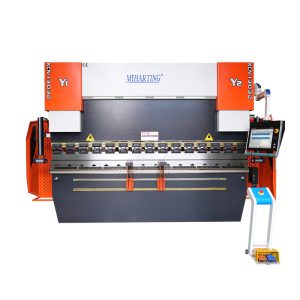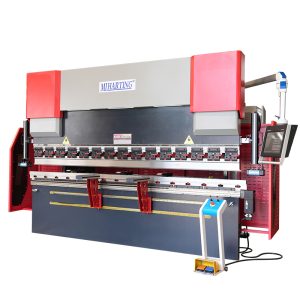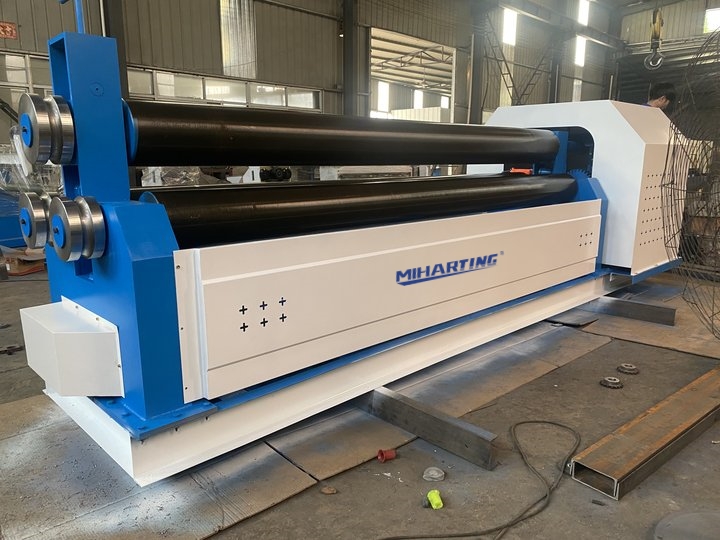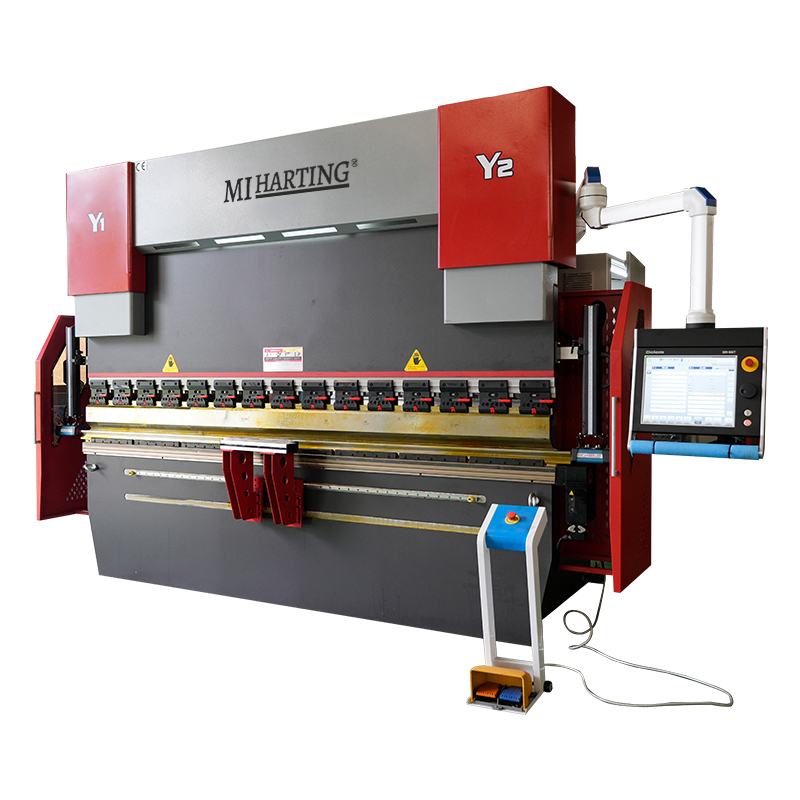Introduction:
In the dynamic world of manufacturing, the ability to effectively bend and shape metal sheets is a critical component of success. From automotive and aerospace industries to construction and consumer goods, the demand for precision metal bending and forming solutions continues to grow. This comprehensive article explores the various metal bending machines and technologies available, providing insights into their features, capabilities, and applications to help businesses navigate the diverse landscape of sheet metal fabrication.
Understanding the Fundamentals of Metal Bending
Metal bending is the process of shaping a metal sheet or plate by applying force to create a desired angle or curvature. This technique is essential in the production of a wide range of components, from intricate automotive parts to structural elements in construction. The choice of metal bending machine depends on factors such as the material thickness, bend radius, and production volume, among other considerations.
Press Brake Machines: The Workhorse of Metal Bending
One of the most widely used metal bending solutions is the press brake machine, also known as a press brake. This versatile equipment utilizes a combination of a stationary lower die and a moving upper punch to bend metal sheets with precision. Press brake machines come in a variety of sizes and capacities, catering to the diverse needs of manufacturers.
Hydraulic Press Brakes:
Hydraulic press brakes are a popular choice for metal bending due to their power, precision, and versatility. These machines use hydraulic pistons to apply the necessary force for bending, allowing for the processing of a wide range of materials, from thin sheets to thick plates. Hydraulic press brakes offer excellent control over the bending process, enabling the creation of complex shapes and profiles.
CNC Press Brakes:
The integration of Computer Numerical Control (CNC) technology has revolutionized the metal bending industry. CNC press brakes combine the power of hydraulic or mechanical press brakes with advanced computer control systems, enabling highly accurate and repeatable bending operations. These machines are particularly well-suited for complex part geometries, batch production, and the production of intricate components.
Mechanical Press Brakes:
Mechanical press brakes, driven by a crankshaft or cam mechanism, offer a robust and cost-effective solution for metal bending. These machines are known for their reliability, high-speed operation, and suitability for high-volume production environments. Mechanical press brakes are often utilized in applications where consistency and efficiency are paramount, such as in the manufacturing of standardized parts.
Specialty Metal Bending Machines: In addition to the conventional press brake machines, the metal bending industry has seen the development of specialized equipment to meet the unique requirements of various industries. These include:
- 1. CNC Bending Machines: Offering advanced computer control and automation, CNC bending machines are designed for complex, three-dimensional metal forming tasks, catering to the demands of industries like aerospace and automotive.
- 2. Tube and Pipe Bending Machines: Dedicated to shaping tubular materials, these machines employ specialized tooling and techniques to create intricate bends and shapes for applications in plumbing, HVAC, and industrial equipment.
- 3. Roll Bending Machines: Ideal for creating smooth, continuous curves in metal sheets, roll bending machines utilize a series of rollers to gradually bend the material into the desired shape, often used in the production of tanks, silos, and architectural elements.
- 4. Angle Bending Machines: Designed to efficiently bend angles, channels, and other linear metal profiles, these machines are essential in the fabrication of structural components, furniture, and various industrial applications.
Factors Influencing Metal Bending Machine Selection
When choosing the right metal bending machine for a particular application, several key factors must be considered to ensure optimal performance and efficiency. These factors include:
Material Thickness and Strength:
The thickness and strength of the metal being bent play a crucial role in determining the appropriate machine and tooling. Thicker and harder materials require more powerful press brakes or specialized equipment to achieve the desired bends without compromising the integrity of the workpiece.
Bend Radius and Angle:
The required bend radius and angle are critical parameters that influence the selection of the metal bending machine. Tighter bend radii and more complex angles may necessitate the use of CNC-controlled equipment or specialized tooling to ensure precise and consistent results.
Production Volume and Throughput:
The anticipated production volume and required throughput are essential considerations. High-volume environments may benefit from the speed and efficiency of mechanical press brakes, while lower-volume or more complex jobs may be better suited to CNC-controlled hydraulic press brakes.
Automation and Programmability:
The level of automation and programmability offered by the metal bending machine can significantly impact productivity and flexibility. CNC-equipped press brakes and bending machines allow for the storage and recall of bending programs, enabling faster setup times and reduced human error.
Operational Safety and Ergonomics:
Ensuring the safety and comfort of operators is a crucial factor in selecting metal bending equipment. Machines with advanced safety features, ergonomic designs, and user-friendly controls can contribute to a safer and more efficient work environment.
Integrating Metal Bending Machines into the Manufacturing Process
Effectively integrating metal bending machines into the overall manufacturing process is key to unlocking the full potential of sheet metal fabrication. This integration involves considering the following aspects:
Workflow and Layout Optimization:
Carefully planning the layout and workflow of the metal bending operation can improve efficiency, reduce material handling, and minimize bottlenecks. This may involve strategically positioning press brakes, storage areas, and other supporting equipment to create a seamless production flow.
Computer-Aided Design (CAD) and Computer-Aided Manufacturing (CAM):
Leveraging CAD and CAM software can significantly enhance the metal bending process. These tools enable the digital design and simulation of parts, allowing for the optimization of bend locations, angles, and tooling selection before physical production.
Automation and Robotic Integration:
Integrating automation and robotics into the metal bending process can further improve productivity, consistency, and safety. Robotic systems can handle material loading, unloading, and part transfer, freeing up operators to focus on more complex tasks.
Quality Control and Inspection:
Implementing robust quality control measures, such as in-process monitoring, dimensional inspection, and statistical process control, helps ensure the consistent production of high-quality metal components and minimize the risk of costly rework or rejections.
Maintenance and Preventive Care:
Proper maintenance and preventive care of metal bending machines are crucial for maintaining optimal performance, reducing downtime, and extending the useful life of the equipment. This includes regular inspections, lubrication, and the timely replacement of wear parts.
Case Studies: Successful Metal Bending Applications
To illustrate the versatility and impact of metal bending solutions, let's explore a few real-world case studies:
Automotive Industry: In the automotive industry, press brakes and CNC bending machines play a vital role in the production of complex body panels, structural components, and intricate interior parts. By leveraging the precision and flexibility of these machines, manufacturers can create highly customized and aesthetically pleasing vehicle designs while ensuring structural integrity and safety.
Aerospace and Defense: The aerospace and defense sectors demand the highest levels of precision and quality in metal fabrication. CNC press brakes and specialized bending machines are instrumental in the production of aircraft fuselage components, engine mounts, and other critical aerospace parts that must meet stringent engineering requirements.
Construction and Architecture: The construction and architecture industries rely heavily on metal bending technologies to create structural elements, architectural features, and decorative components. From roll bending machines used to form curved beams and panels to angle bending machines for creating intricate façade elements, these machines enable the realization of complex designs and innovative building solutions.
Consumer Goods and Furniture: Metal bending machines are also essential in the production of consumer goods and furniture. From the creation of intricate wire frames for household items to the shaping of metal components for office furniture, these versatile machines help manufacturers achieve distinctive designs and enhanced product functionality.
Conclusion:
In the ever-evolving world of metal fabrication, the importance of reliable and versatile metal bending solutions cannot be overstated. From conventional press brakes to specialized CNC-controlled machines, the metal bending industry offers a diverse array of technologies to meet the demands of various industries. By understanding the key factors influencing machine selection and effectively integrating these solutions into the manufacturing process, businesses can unlock the full potential of sheet metal fabrication, driving innovation, efficiency, and competitive advantage. As the industry continues to evolve, the continued advancements in metal bending machines will undoubtedly play a pivotal role in shaping the future of manufacturing.









